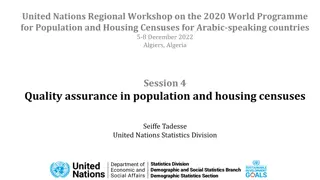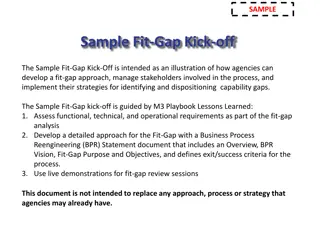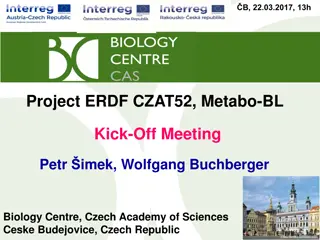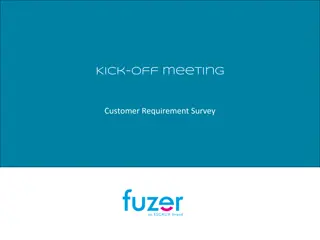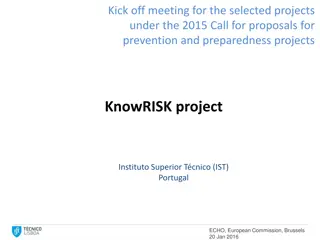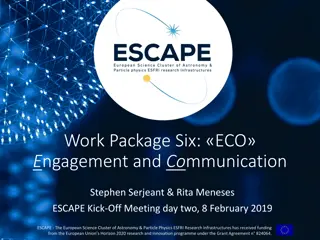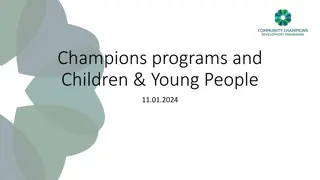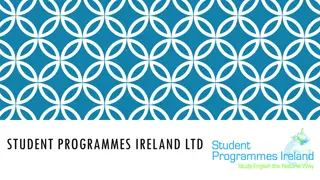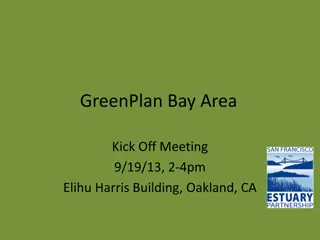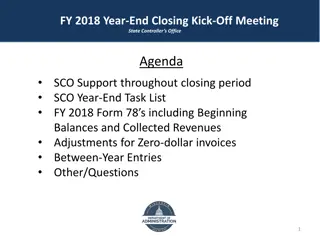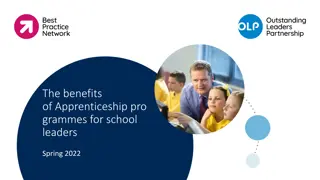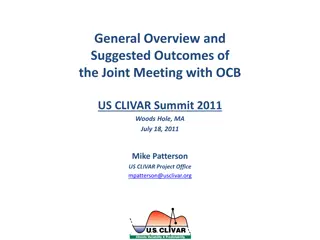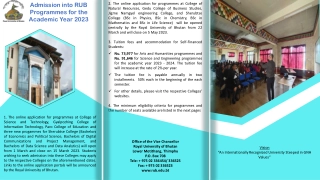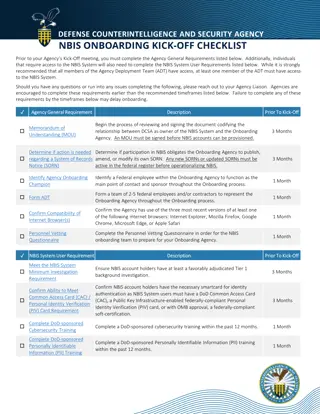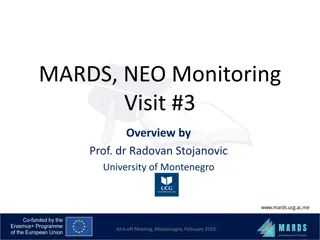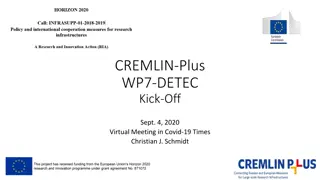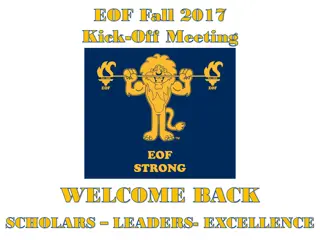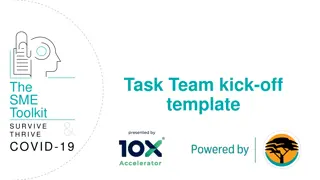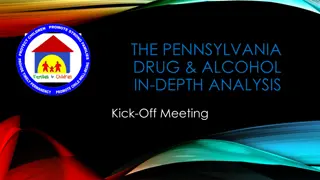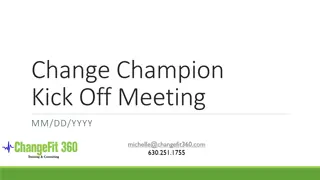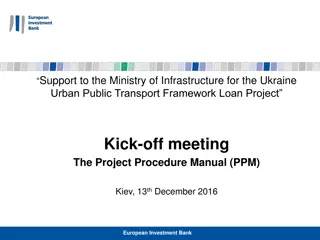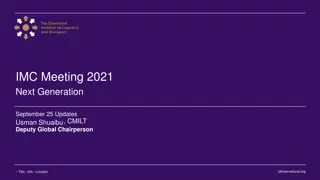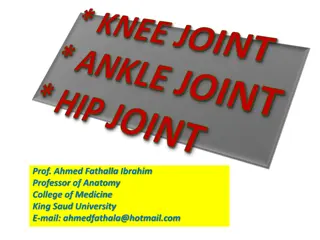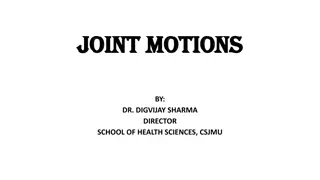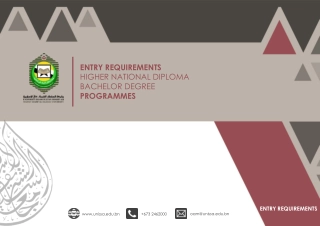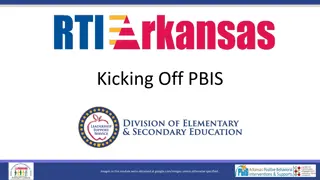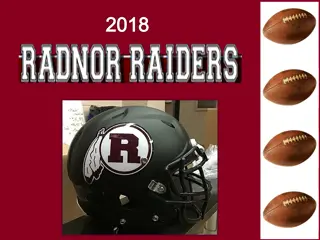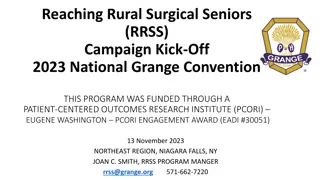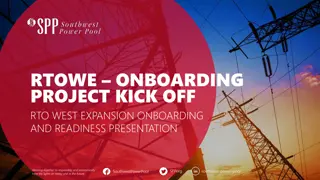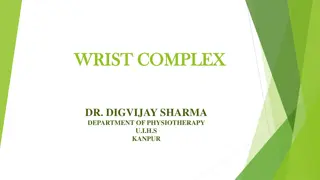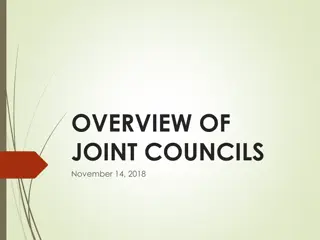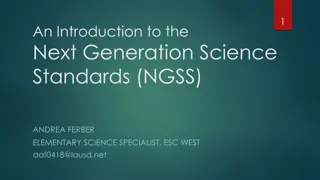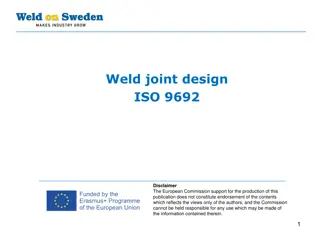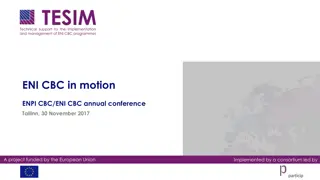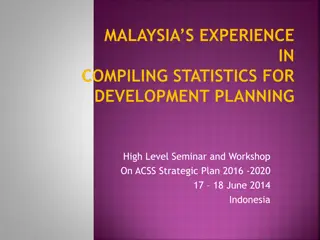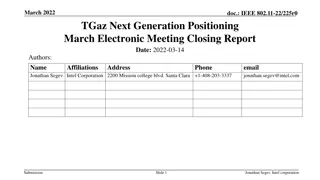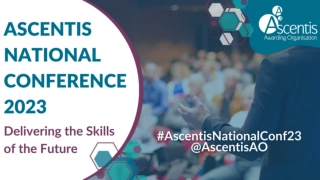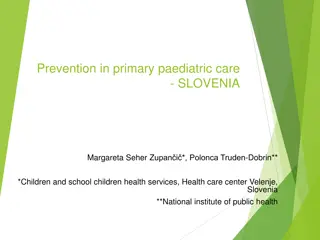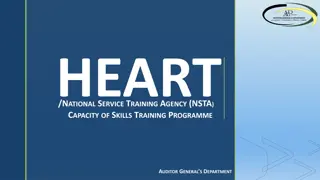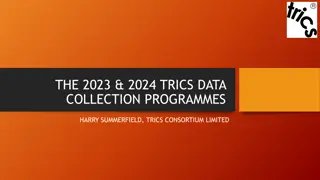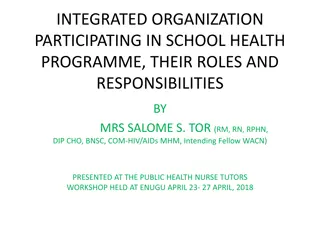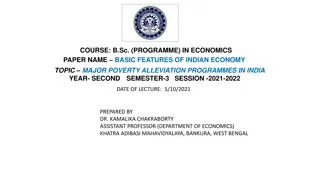REDEEM 2 Kick-off Meeting: Shaping the Next Generation of Joint Programmes in Science and Technology
The REDEEM 2 Kick-off Meeting in Tallinn on September 17-18, 2018, marks the beginning of a collaborative project among 12 universities to shape the future of joint programmes in science and technology. The meeting agenda includes presentations from partners, discussions on work packages, communication strategies, and planning for upcoming sessions. Key topics encompass project timelines, budget allocation, and partner roles. This initiative aims to enhance educational offerings and foster innovation in research and academia.
Uploaded on Oct 09, 2024 | 0 Views
Download Presentation

Please find below an Image/Link to download the presentation.
The content on the website is provided AS IS for your information and personal use only. It may not be sold, licensed, or shared on other websites without obtaining consent from the author. Download presentation by click this link. If you encounter any issues during the download, it is possible that the publisher has removed the file from their server.
E N D
Presentation Transcript
Shaping the next generation of Joint Programmes in Science and Technology REDEEM 2 Kick-off meeting Tallinn, September 17-18, 2018
September 17 13:00 Welcome to TTU address by the TTU Vice Rector for International Relations 14:00 Welcome to the project, approval of the agenda, practical info, brief summary of the project and links to REDEEM 1 14:25 Presentation of the partners: general info on the university with facts and figures (1-2 slides), experience with double degrees/joint programmes (in particular those with the participation of companies), persons who will be involved in the project (5/10 min per partner) 16:00 Coffee break 16:20 General presentation of the project and discussion of the changes introduced by the evaluator: New Timeline General rules Meetings Work packages Budget Reporting rules Partner roles Questions and answers 17:20 Communication (website, asana, online meetings), administrative issues, reporting and dissemination 18:00 End of the session and wrap-up 19:00 Dinner (venue TBC)
September 18 9:00 Work session on the first work package: KTH presents a draft of the activity-plan followed by a discussion on methodology, tasks, role of each partner, deadlines, planning of the next meetings. 10:00 Work session on the second work package (part 1): IST presents a draft of the activity-plan followed by a discussion on methodology, tasks, role of each partner, deadlines, planning of the next meetings. 11:00 Coffee break 11:30Work session on the second work package (part 2): discussion on the contents of the questionnaire 12:30 Catered lunch 13:15Work session on the second work package (part 3): methodology, timeline, responsibilities, outreach, prices, etc. 14:15 Short discussion on work package 3-4-5-6: 15 min each 15.30 Planning of the next meetings, AOB and end of the session
Consortium of 12 universities founded in 1990 Registered in 1995 as a stichting under the Dutch law A multi-location European University 2 500 professors 10 700 teaching staff 13.100 PhD students 142 000 students
Twelve full members UPC Universidad Polytecnica de Catalunya, Barcelona Technische Universit t, Darmstadt Trinity College Dublin Karlsruhe Institute of Tehnology University of Technology, Eindhoven Aalto University, Helsinki Institut National Polytechnique de Grenoble Ecole Polytechnique F d rale de Lausanne Instituto Superior Tecnico, Lisboa Universit Catholique de Louvain-la-Neuve Katolieke Universiteit Leuven Royal Institute of Technology, Stockholm Politecnico di Torino TUD TCD KIT TU/e AALTO Grenoble INP EPFL IST EFL2 KTH POLITO
Six associate members Ecole Polytechnique Montreal, Canada Tomsk Polytechnic University, Russian Federation Tsingua University Beijing, China Georgia Institute of Technology, USA Technion Haifa, Israel Universidade de Sao Paulo, Brasil
The MISSION of CLUSTER is to Enhance cooperation among members to promote exchange, cooperation and interaction between students, faculty and administrative staff Provide a strategic platform for joint programmes Develop interaction, cooperation and joint programmes with associate members Support best practice in all aspects of university management and leadership Provide a forum for strategic policy discussions
The MISSION of CLUSTER is to Benefit from EU programmes within education, research and innovation Become a strategic partner for the European Commission Take a lead in pedagogical development to strengthen the education at the MSc and PhD level for CLUSTER members Build partnerships with major European enterprises Become the first choice for MSc engineering students in and outside Europe
Organization General Assembly (meeting once a yer) Steering Committee (meeting twice a year) Departments (covering the differents scientific fields) Task Forces (working on transversal aspects of HE) Working Groups (working on specific well focused goals) Presidency (rotating every second year) CLUSTER coordinator
Erasmus+ Key Action 2 Strategic Partnerships EU added value is essential Excellence is a plus but a certain degree of capacity building is needed Mobility is not the core activity but allowed Examples: develop, test and implement joint programmes/curricula; integrate various teaching modes Partnership: 3 program universities (with the possibility of inviting non- EU partners) Budget: max 150 K /year Duration: between 2 and 3 years
Partners - KTH Royal Institute of Technology (SE) - Aalto University (FI) - CVUT Prague (CZ) - IST Instituto Superior Tecnico (PT) - KIT Karlsruhe Institute of Technology (DE) - KUL Katholieke Universiteit Leuven (BE) - Tallinn Technical University (EE) - TU Darmstadt (DE) - UPC Barcelona (ES)
General Features - Framework: Erasmus+ Strategic Partnerships - Under the umbrella of CLUSTER - Duration: September 1st, 2018 August 31, 2021 - Funding: 342.349
Priorities and objective Policy priority: HORIZONTAL: Development of relevant and high-quality skills and competences Sectoral priorities: HIGHER EDUCATION: Developing skills developing curricula relevant to the labour market and societal needs HIGHER EDUCATION: Supporting effective and efficient higher education systems Main objective: This project has the ambition of covering the gaps identified in all the known previous initiatives focusing on an analysis of the current state of the art for what concerns joint programmes in the field of STEM and make use of past experiences and specific competence at the partner universities to develop the next generation of European joint programme with a strong focus on employability.
Definition A plethora of terms used to describe international collaborative programs such as double and joint degrees: double, multiple, tri-national, joint, integrated, collaborative, international, consecutive, concurrent, co-tutelle, overlapping, conjoint, parallel, simultaneous, and common degrees. They mean different things to different people within and across countries, thereby, causing mass confusion about the real meaning and use of these terms . Knight, Jane (2011). Doubts and Dilemmas with Double Degree Programs . In: Globalisation and Internationalisation of Higher Education [online monograph]. Revista de Universidad y Sociedad del Conocimiento (RUSC). Vol. 8, No 2, pp. 297-312. UOC. October 9, 2024 Slide 16
Definitions International Joint Programme Study Abroad Academic Exchange Study Programme with integrated elements abroad Dual Degree Programme -individual -joint learning outcomes -mutual cooperation around a study programme developed and managed jointly by two institutions -one institution owns the programme and degree -integrated study programme developed and managed jointly -based on individual agreement and on academic cooperation -based on institutional agreement and on academic cooperation - joint selection and admission - Joint structures for quality assurance and administration -based on agreement with the cooperating institution(s) that provides elements of the programme separate admissions, open to the own students of the partner HEIs - Joint awarding of the degree and issuing a joint or a multiple diploma -cooperation regulated by an agreement award of double degrees to all students -cooperation regulated by an agreement 17
Definition for our scope JOINT PROGRAMME is here used as a general term covering all the forms of academic cooperation at any level leading to the deliverance of a programme with embedded mobility offered jointly by at least two HEI located in two different countries Regardless of the type of diploma(s) issued: joint, double, multiple No ambition to define the different typologies In the future the official Bologna definitions should be adopted. 1) Joint Degrees 2) Multiple Degrees Joint Programmes should be the single denomination to identify collectively all the typologies October 9, 2024 Slide 18
Definition Bologna Yerevan 2015 Joint programme is understood as an integrated curriculum coordinated and offered jointly by different HEIs, leading to joint or multiple degrees. Joint degree - a single document awarded by HEIs offering the joint programme and nationally acknowledged as the recognized award of the joint programme. Multiple degree separate degrees awarded by issuing separate diplomas by the participating HEIs. If two degrees are awarded, it is a double degree . October 9, 2024 Slide 19
The Bologna Process Paris Communiqu In order to encourage the development of more joint programmes and joint degrees, we will also enable and promote the use of the European Approach for Quality Assurance of Joint Programmes in our higher education systems. We welcome and will promote the development of the Database of External Quality Assurance Results (DEQAR) We will foster and extend integrated transnational cooperation in higher education, research and innovation, for increased mobility of staff, students and researchers, and for more joint study programmes throughout the whole EHEA. We take note with interest of the recent EU initiative on European Universities and we will encourage all our higher education institutions to work in such new settings. 20
The European approach to QA in JPs Approved in Yerevan 2015 What does it mean? An EQAR-listed quality assurance agency can do an accreditation of the entire joint programme, with the accreditation decision accepted by authorities in all partner countries No need for separate, national accreditation processes 21
The European approach to QA in JPs How does it work? If external, programme-level accreditation is required Check with your own national QA Agency if they can implement the European Accreditation, if the legislative base exists Check the EQAR European Quality Assurance Register for approved agencies Contact agencies to ask for fees, timetables etc 22
Definitions Joint Programmes used as a general term covering all the forms of academic cooperation at any education level leading to the deliverance of a programme with embedded mobility offered jointly by at least two HEI located in two different countries. We talk about Joint Programmes leading to a Joint or Multiple Degree
Expected Results State of the Art Report on the current status of JPs at the partner universities, in Europe and beyond (particular focus on the participation of employers) Repository of best practices in JPs in the field of STEM with the participation of companies Comparative statistical and qualitative analysis on expectations, impact and employability of the existing Joint Programmes based on the feedback of alumni Promotion tools for marketing JPs in STEM among European Students Framework (guidelines, checklists and tools) for the development of joint programmes in the frame of industry-academia alliances Set of innovative pilot Joint Programmes launched during the lifetime of the project Impact analysis on the feedback from students and academics involved in the pilots and recommendations for future improvement (only if feasible) Creation of a permanent network of Joint Programmes with Industry-Academia alliances
Outputs 1) State of the art and repository of best practices - KTH 2) Quantoitative and qualitative analysis - IST 3) Framework and guidelines for the inclusion of companies in JPs - TUD 4) Implementation Phase- Aalto 5) Impact analysis - IST 6) Creation of the Industry/Academia JP network - KTH?
IO1 - State of the art and repository Internal and external analysis on good practice and bad experiences in JPs with a direct participation of the employers leading to a report on the current state of the art, lessons learned and a repository of best practices worldwide. The structure and contents of the IO and related activities will be discussed in the kick off meeting in month 1 and the first draft of the report will be presented at the second project meeting in month 3. The identified best practice and related actors (academics and alumni) will be contacted in order to collect a number of testimonials both in the form of written interviews and videos which will be used for promotional purposes. The IO will be structured in the following activities: O O1/A1: Desk Research on the State of the Art and report O O1/A2: Population of the repository on Best practice 1/9/2018 30/11/2018
IO2 - Comparative analysis Surveys among JP alumni from the two past years. The first survey will be performed in month 5 (graduates 2016/17 and 2017/18, the second one in month 17 (graduates 2018/19), the third one in month 29 (graduates 2019/20). External universities to be involved (CLUSTER, T.I.M.E. and others). The first survey will be followed by a set of interviews and focus groups involving to all the relevant target groups performed by all partners locally between month 8 and 11. This first set of interviews will focus on their expectations and point of view on the creation of JP will full involvement of companies. Activities: O O2/A1 Development of the questionnaire O O2/A2 Collection of the data on the alumni and academics to survey O O2/A3 Carrying out the survey O O2/A4 Quantitative Results analysis and report O O2/A5 Development of the scripts for the interviews/focus groups and identification of the actors to involve O O2/A6 Performance of the interviews O O2/A7 Qualitative analysis of the interviews O O2/A8 Second quantitative survey on the second cohort of students and update of the report O O2/A9 Third quantitative analysis on the third cohort of students and update of the report 1/10/2018 30/4/2021
IO3 - Framework and guidelines for the inclusion of companies in JPs The activities leading to this IO will be the definition of criteria, identification of recommendations, development of formats, procedures, structures, tools, methods, and contents. These elements will be the direct consequence of the findings and results of the first two Intellectual Outputs. The partners will identify the academics and industrial partners to be involved in the pilots. These individuals will be trained in a specific teaching/training event tightly linked to this IO. The IO will be structured therefore in the following activities: O3/A1: Development of the Framework O3/A2: Development of a training package: Identification of a training format and collection and composition of a training portfolio O3/A3: Training of the trainers: Planning, organisation and carrying out of the training event. O3/A4: Follow-Up of the training event: Analysing the participants feedback and revision of the training format. The pilot training should be transferable to any other institution willing to run internal trainings in this sense for own staff. 1/3/2019 31/10/2019
IO4 - Implementation phase Trained academics/administrators will start building the pilots as brand new JPs or by reforming existing ones according to the framework provisions. We will investigate innovative approaches to improve the efficiency of developing new joint projects among multiple partners. The goal is to build a "family" of joint projects with less development overhead than traditional approaches require. This modular" approach promises a more efficient way of building joint projects compared to regarding each partnership in isolation and developing a matching program from scratch. Moreover, by having project components that meet a certain standard, quality aspects can be improved. During year 2 of the project curricula will be developed, internal approvals will be pursued, partners identified (academic and industrial), marketing will be performed as well as recruitment, development of administrative and logistic support and procedures, recognition tools, etc. The first year of the pilots will starts running in month 23. The IO will be structured in the following activities: o O4/A1: Planning of the pilots: fields, contents, identification of academics and companies to involve o O4/A2: Coordination of the carrying out of the pilot JPs at all partner universities o O4/A3: consolidation of the framework and model for JPs according to the results of IO5 1/9/2019 31/8/2021
IO5 - Impact Analysis The IO coordinator will carry out a final survey on the individuals that will have been involved in the pilots so to evaluate their opinions on the new JPs, their suggestions for improvement and compare their satisfaction level with the one of the previous generations collected through the surveys and interviews under IO2. A second set of interviews will be carried out between month 32 and 36 on the perceptions of the actors that will have been involved in the pilot JPs with the participation of companies in year 3 of the project. Their feedback will be used to adjust structure, methods and contents of the JPs and will be included in the report. This report will then be composed by a quantitative analysis (comparative study based on statistical data) and a quantitative analysis (descriptive texts on the expectations and impact as perceived by the involved actors). The IO will be structured in the following activities: O5/A1 Development of questionnaire and scripts for the interviews O5/A2Carrying out survey and interviews O5/A3 Analysis of the results 1/2/2021 31/7/2021
IO 6 European Network of Industry/Aacademia JPs Throughout year 2 and 3 of the project and through the dissemination activities that the partners will carry out externally, interest will be collected from partner universities and related companies to be included in a formal network bringing together actors active in developing and running JPs with the characteristics identified by the consortium as a result of the project activities. This IO will ensure sustainability and exploitation of the results beyond the project lifetime. The IO will be structured in the following activities: O O6/A1: Identification and recruitment of partners O O6/A2: Development of a framework to formalize the network (scope, vision, mission, responsibilities, activities, working methods, etc.) 1/1/2019 31/8/2021
Transnational Project Meetings and events 1. Month 1 (Tallinn): Kick off meeting. The contents and structure of the desk research are discussed as well as the definition of questionnaires and scripts for the first round of surveys and interviews 2. Month 6? (Helsinki?): discussion on the general structure and contents of the pilots, identification of the fields, academics, administrators, employers to involve (2 full days) 3. Month 13? (Darmstadt): meeting to set the agenda for the development and implementation of the pilots and agree on structure and contents. The meeting will be followed by the training programme (2 days lunch to lunch meeting)
Transnational Project Meetings and events 4. Month 22 (Barcelona): Management meeting and Kick off of the developed pilots. Follow up on the second comparative study on the second cohort of graduates (2 full days meeting) 5. Month 28 (Leuven): Follow up on the results of the first semester and launch of the third comparative study (2 full day meeting with the participation of the pilot JP developers) 6. Month 34 (Stockholm): Final Management meeting in parallel to the Multiplier event 2 (1.5 days meeting).
Budget overview - Tot allocated budget vs budget applied for - From real costs to unit costs - Co-funding - Flexibility: 20% rule - Transfers to the coordinator: - 40% within 60 days - 40% by 28 February 2020 (or when 70% is spent) - 20% within 60 days from submission of final report - Transfers to the partners: same timeline on the basis of the reported costs
Budget lines - Project Management (Administrative costs, overheads, other costs) - Transnational Project Meetings - Intellectual outputs (staff costs) - Multiplier events - Teaching/training activities - Exceptional costs
Budget allocation per budget heading as indicated in this section can be modified by the beneficiary, except in the cases requiring an amendment approved by the National Agency, as specified in the article I.3.3 of the Special Conditions of this Grant Agreement. Budget Items Total Grant Project Management and Implementation 90 000,00 Transnational Project Meetings Intellectual Outputs Multiplier Events Learning/Teaching/Training Activities Exceptional Costs 40 540,00 182 137,00 16 000,00 9 997,00 3 675,00 Total Granted 342 349,00
Budget Project Management - Lump-sum: 250 /month (partners) 500 /month (coordinator) - It covers all the administrative and general costs - Possible use: staff costs, currency exchange, extra costs (meals when hosting a meeting, etc.) - Proposal: project management budget used to reimburse real costs for meetings, non eligible trips, invited guests, prices for students. - No need for reporting
Budget Project Meetings - All meetings related to a specific output or to the administration of the project - Travel costs: 575 or 760 (lump-sum depending on distance) - Lump sum contribution covering all costs - Meetings from lunch to lunch to reduce the costs (?) - In general 2 participants per University with flexibility - Reporting: participant list with signtures and copy of the e-tickets
Budget Intellectual Outputs - Definition: staff costs related to concrete and tangible results - The Intellectual Output coordinator will judge and report on the commitment of the partners in delivering what expectd - Ceiling cost per day pre-defined - Only Teacher / Researcher / Technician. N.B. No administrative costs!! - Reporting: time-sheets
Budget Multiplier events Contribution to the consortium for the dissemination of the activities and results - - Lump-sum: 100 per local participant and 200 per international participant - Mid-term event in Prague 40 participants. Month? - Final event in Stockholm (?) 50 participants June 2021 - It s up to the consortium to decide how to use the budget: Pre payment of accommodation, meals, transportation, speakers - Reporting: participant list with signatures
Budget Learning, teaching, training - Travel and subsistence cost for training/networking activities - Min duration 3 full days - Only one event planned (19 participants) - Travel costs: 275 (360 for >2000 km) - Subsistence costs: 100 / day - Reporting: participant list with signatures and copy of tickets
Budget Exceptional costs - Definition: all costs not covered by the previous budget lines and to be outsourced - Planned costs: external evaluation + printing costs for final report and brochures - Only 75% of the real costs (25% co-financing) - How are we going to cover the 25% (project management?) - Reporting: receipts
Administrative issues - Consortium agreements - Documents for reporting (time-sheets and travel costs) - Internal evaluation (survey on the project management) - Mobility Tool+ online
Communication - Logo? - Presentation templates - Website: word press? www.redeemproject.eu - Internal administrative platform: www.asana.com - Online meetings: Skype? How often? - Physical meetings (6?) - Final activity report
Open questions - Involvement of other Cluster and TIME members - Invited guests to multiplier events (recruitment managers, communication managers, student representatives, companies, media, Cluster, other university networks ). - What costs to be covered at the multiplier events? - Interaction with EUI? -


